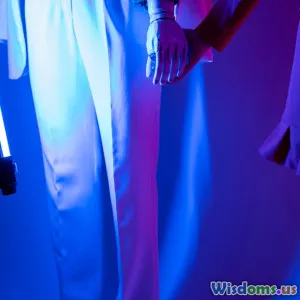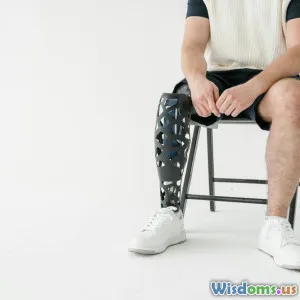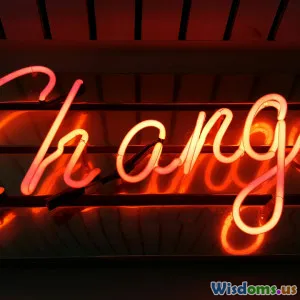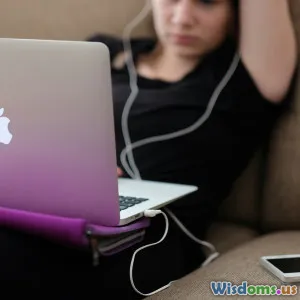
The Intersection of Fashion and Technology
5 min read Explore how technology is revolutionizing the fashion industry, from smart textiles to AI-driven design. (0 Reviews)
The Intersection of Fashion and Technology
In the modern world, fashion and technology are becoming increasingly intertwined. This intersection is not just about the latest gadgets; it encompasses a wide range of innovations that are reshaping how we design, produce, and consume fashion. From smart textiles to artificial intelligence, technology is paving the way for new trends, sustainable practices, and personalized experiences.
The Rise of Smart Textiles
Smart textiles, also known as e-textiles, have emerged as one of the most exciting developments in the fashion industry. These fabrics are embedded with sensors and actuators that can monitor various parameters such as temperature, heart rate, and even the wearer’s movement. For instance, companies like Wearable X have developed yoga pants that provide feedback on a wearer’s posture through haptic technology, guiding them to achieve better alignment in their poses.
Moreover, brands like LilyPad are creating garments that can light up or change color based on environmental stimuli, providing not only functionality but also unique aesthetic appeal. The potential applications of smart textiles are vast, ranging from fitness tracking to fashion statements.
Artificial Intelligence in Design
Artificial intelligence (AI) is another game-changer in the fashion industry, revolutionizing how designers approach their craft. AI algorithms can analyze vast amounts of data from consumer preferences, social media trends, and historical sales to inform design choices. For example, brands like Zalando and Stitch Fix utilize AI to recommend styles to customers, predicting what they are likely to purchase.
Additionally, AI-driven design tools can create new clothing patterns and styles at an unprecedented speed, allowing designers to focus on creativity rather than repetitive tasks. This technology not only enhances productivity but also fosters a more agile fashion environment that can respond quickly to changing trends.
Virtual Reality and Augmented Reality
Virtual reality (VR) and augmented reality (AR) are transforming the shopping experience, allowing consumers to engage with fashion in immersive ways. Retailers such as IKEA have pioneered AR apps that let customers visualize how furniture fits in their homes. Similarly, fashion brands like Gucci and Zara are leveraging AR to create virtual fitting rooms, enabling shoppers to try on clothes from the comfort of their own homes.
This technology not only enhances the shopping experience but also reduces return rates as customers can make more informed purchasing decisions based on virtual try-ons.
Sustainability Through Technology
Sustainability is a significant concern in the fashion industry, and technology is playing a crucial role in promoting eco-friendly practices. Innovations in textile recycling and production processes are helping brands reduce waste and minimize their carbon footprint. For instance, companies like Econyl are using recycled nylon from ocean plastics to create high-quality fabrics.
Furthermore, blockchain technology is being utilized to provide transparency in the supply chain, allowing consumers to track the journey of their garments. This transparency fosters accountability among brands and encourages sustainable practices.
The Future of Fashion and Technology
As we look ahead, the synergy between fashion and technology is only set to grow. The emergence of the metaverse presents new opportunities for brands to create digital fashion experiences, from virtual fashion shows to NFT (non-fungible token) fashion items. These innovations will not only cater to the tech-savvy consumer but also redefine what it means to be fashionable in a digital age.
In conclusion, the intersection of fashion and technology represents a transformative force within the industry. With advancements in smart textiles, AI, AR, and sustainability efforts, the future of fashion is more innovative and inclusive than ever. As consumers demand more personalized and sustainable options, the collaboration between these two fields will continue to evolve, shaping the way we experience and interact with fashion.
Rate the Post
User Reviews
Popular Posts




















